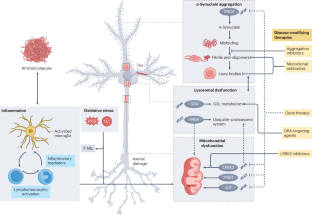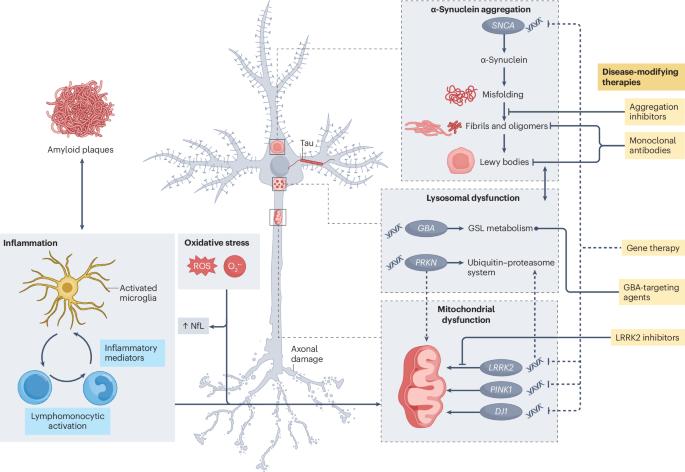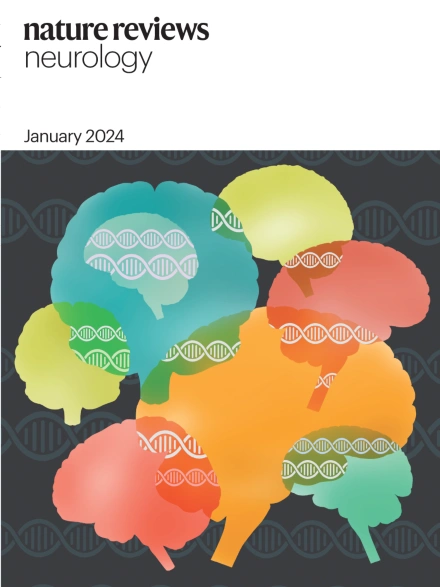Parkinson disease therapy: current strategies and future research priorities
IF 28.2
1区 医学
Q1 CLINICAL NEUROLOGY
引用次数: 0
Abstract
Parkinson disease (PD) is the fastest growing neurological disorder globally and poses substantial management challenges owing to progressive disability, emergence of levodopa-resistant symptoms, and treatment-related complications. In this Review, we examine the current state of research into PD therapies and outline future priorities for advancing our understanding and treatment of the disease. We identify two main research priorities for the coming years: first, slowing the progression of the disease through the integration of sensitive biomarkers and targeted biological therapies, and second, enhancing existing symptomatic treatments, encompassing surgical and infusion therapies, with the goal of postponing complications and improving long-term patient management. The path towards disease modification is impeded by the multifaceted pathophysiology and diverse mechanisms underlying PD. Ongoing studies are directed at α-synuclein aggregation, complemented by efforts to address specific pathways associated with the less common genetic forms of the disease. The success of these efforts relies on establishing robust end points, incorporating technology, and identifying reliable biomarkers for early diagnosis and continuous monitoring of disease progression. In the context of symptomatic treatment, the focus should shift towards refining existing approaches and fostering the development of novel therapeutic strategies that target levodopa-resistant symptoms and clinical manifestations that substantially impair quality of life. Parkinson disease (PD) poses substantial management challenges owing to progressive disability and emergence of levodopa-resistant symptoms and treatment-related complications. This Review examines the current state of research into symptomatic and disease-modifying PD therapies and outlines future priorities for advancing our understanding and treatment of the disease.


帕金森病治疗:当前战略和未来研究重点
帕金森病(PD)是全球增长最快的神经系统疾病,由于渐进性残疾、左旋多巴耐药症状的出现以及与治疗相关的并发症,帕金森病的治疗面临巨大挑战。在本《综述》中,我们探讨了帕金森病疗法的研究现状,并概述了推进我们对该疾病的理解和治疗的未来重点。我们确定了未来几年的两大研究重点:第一,通过整合敏感的生物标志物和靶向生物疗法来延缓疾病的进展;第二,加强现有的对症治疗,包括手术和输液疗法,以延缓并发症的发生并改善对患者的长期管理。由于帕金森病的病理生理学具有多面性,其发病机制也多种多样,因此阻碍了疾病的治疗。目前正在进行的研究主要针对α-突触核蛋白聚集,同时还在努力解决与不常见的遗传性疾病相关的特定途径。这些工作的成功有赖于建立健全的终点、整合技术以及确定可靠的生物标志物,以用于早期诊断和持续监测疾病进展。在对症治疗方面,重点应转向完善现有方法,并促进针对左旋多巴耐药症状和严重影响生活质量的临床表现的新型治疗策略的开发。
本文章由计算机程序翻译,如有差异,请以英文原文为准。
求助全文
约1分钟内获得全文
求助全文
来源期刊

Nature Reviews Neurology
医学-临床神经学
CiteScore
29.90
自引率
0.80%
发文量
138
审稿时长
6-12 weeks
期刊介绍:
Nature Reviews Neurology aims to be the premier source of reviews and commentaries for the scientific and clinical communities we serve. We want to provide an unparalleled service to authors, referees, and readers, and we work hard to maximize the usefulness and impact of each article. The journal publishes Research Highlights, Comments, News & Views, Reviews, Consensus Statements, and Perspectives relevant to researchers and clinicians working in the field of neurology. Our broad scope ensures that the work we publish reaches the widest possible audience. Our articles are authoritative, accessible, and enhanced with clearly understandable figures, tables, and other display items. This page gives more detail about the aims and scope of the journal.
 求助内容:
求助内容: 应助结果提醒方式:
应助结果提醒方式:


